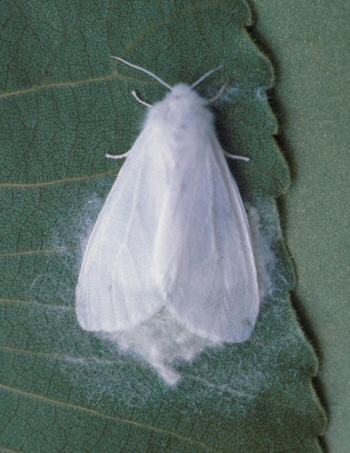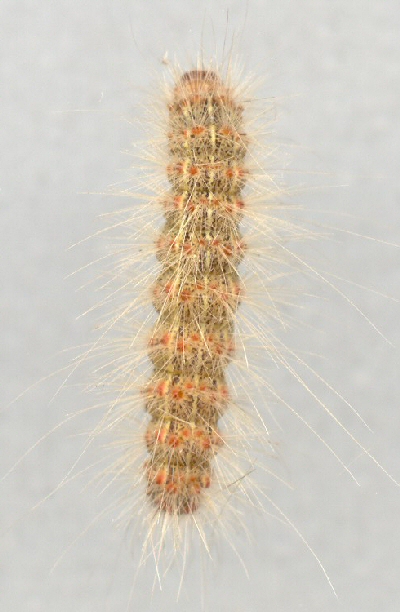Fall Webworms
 Scientific Name
Scientific Name
Hyphantria cunea
Hosts
The fall webworm has been recorded on at least 88 species of shade, fruit, and ornamental trees in the United States. The preferred hosts vary from one area to another. In Oklahoma, persimmon and pecan are most commonly infested and black walnut and hickory are also common hosts. Sycamore, birch, and redbud are often attacked in years of heavy infestations. Infestations on cottonwood, American elm, and bald cypress have been reported a few times.
Symptoms

Life Cycle
Adults of the overwintering generation emerge during May or occasionally in late April.

Description
The adult moths are almost pure white and have a wing-spread of about 1 1/4 inches. Some specimens have the front wings more or less heavily marked with small black spots. Larvae may be pale yellow, yellowish green, greenish, or orange but most have two rows of black spots down the back. The head may be red or black. The body is rather sparsely covered with long white hairs. They are found in webs on the host tree.
Control
Please contact your local county extension office for current information.

